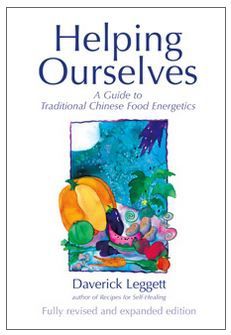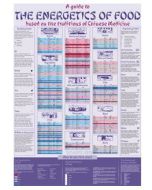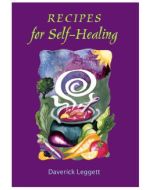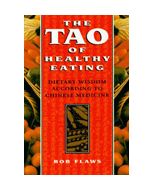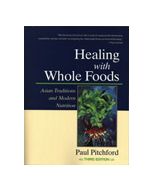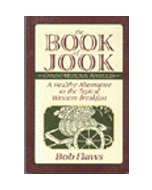We use cookies to make your experience better. To comply with the new e-Privacy directive, we need to ask for your consent to set the cookies. Learn more.
Helping Ourselves: A Guide To Traditional Chinese Food Energetics
This manual is intended as a resource for students and practitioners of traditional Chinese medicine, such as Acupuncture, Shiatsu and Qi Gong as well as for the general reader. The book details the energetic properties of around 300 common foods, and explains the principles of Chinese medicine and how to apply them for daily use. This manual encourages the reader to know their own body, in order to help themselves and get the best out of the information provided. "Helping Ourselves" is not designed as a quick-fix or dietary revolution, but is intended as a supplement to, rather than a substitute for, skilled professional guidance. This book can be read alone or as an accompaniment to "Recipes for Self-Healing" and "The Energetics of Food".
- The manual of choice for thousands of practitioners
- Includes a comprehensive database of almost 500 foods and herbs
- User-friendly format with concise, clear explanations
- Focuses on familiar and available foods
- An ideal introduction to traditional Chinese food energetics
It sometimes seems as though there as many dietary systems as there are practitioners of complementary medicine, and whilst most agree that diet plays a vital role in establishing and maintaining health and well-being, there is little agreement on what constitutes a healthy diet. Mark Twain once observed "If the only tool you have is a hammer, all your problems look like nails", and it is difficult to find an area of human endeavour where this is more true than dietary therapy. Raw food eaters, food combiners, vegans and vegetarians, food supplement promoters, brown rice addicts all hold to their one and only system. As the 19th century English writer Thomas Love Peacock put it "Each philosopher who finds, a favourite system to their mind, in every way to make it fit, will force all nature to submit".
As practitioners of Chinese medicine, however, we are uniquely fortunate in inheriting a long and honoured tradition of dietary observation and experimentation. Chinese dietary therapy is not perfect, of course, and is obviously somewhat culture specific. If we look in a standard Chinese book of food cures we find that many of the ingredients are unobtainable, and of those that are, there are many we would not choose to eat. At the same time, whilst most Western practitioners agree that caution with raw foods is sensible to protect the Spleen, we should remember that in China eating raw vegetables carries a substantial risk of contracting biliary worms and other diseases due to the liberal use of untreated human manure in the fields. These are minor reservations, however, compared to the wisdom and adaptability of Chinese dietary therapy. There is no single appropriate diet within Chinese medicine, but a deep understanding of the energetic nature of different foods, and thus any number of 'hammers' to help harmonise various patterns of disharmony. In addition there is a healthy recognition that our dietary habits (classified under the broad heading of 'regular eating') and emotional approach to food and eating are as important as the content of the diet itself.
Helping Ourselves is a simply produced and relatively short introduction to the basic principles of Chinese dietary therapy aimed at patients. It explains all the basic principles, for example the nature of the Spleen, the importance of regular eating habits (including relaxation and positive attitude), the temperatures and flavours of foods, and appropriate foods to treat different patterns of disharmony (e.g. to nourish yin, yang, qi and blood, move qi, drain damp, warm cold etc.) It therefore presupposes that a patient will first have been offered a diagnosis by a practitioner. In addition to the book itself, there is a wall chart that condenses the information in the book. The foods discussed are (mostly) easily available, and the writing intelligent, clear and concise. The book is equally suited for patients and practitioners.
Peter Deadman
Introduction
PART ONE How To Use This Book
1. Introducing the Spleen
2. Eating Well Some General Considerations Some Specific Considerations
3. How Food is Described in Traditional Chinese Medicine The Temperatures of Food The Flavours of Food Th~e Routes and Actions of Food
4. Putting This Information to Use - "The Dietary Tilt"
5. How to Use this Book - A Step by Step Guide Examples
PART Two Patterns ofDishalmony
1. Def~ciencies
Yn
Yang
Blood
2. Excesses
Dampness Cold Heat Qi Stagnation Blood Stagnation
PART THREE Food Energetics Reference Chart
Grains
Vegetables
Fruits
Beans
Nuts and Seeds
Fish
Meat
Dairy
Herbs and Spices
Oils and Condiments
Beverages
Common Supplements
Endnotes
A Note on Sources
Bibliography
| Summary | Daverick Leggett |
|---|---|
| Author | Daverick Leggett |
| Publication Date | 1 Jan 1970 |
| Publisher | Meridian Press |
| Number of Pages | 58 |
| Book Format | Softback |
* Orders shipped outside of Europe are eligible for VAT relief and will not be charged VAT.

